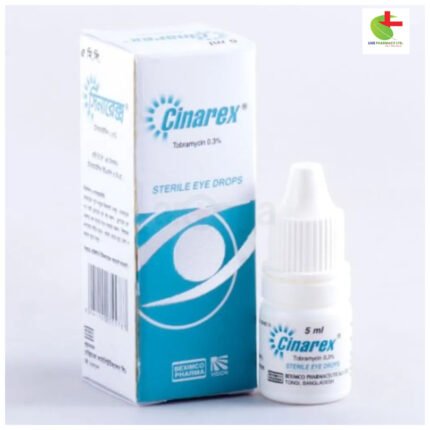Voligel
97.00৳ Tube (50 gm)
- Cinarex is a potent NSAID for pain and inflammation relief in rheumatism, post-surgical injuries, and gynecological conditions.
- Contains Diclofenac Sodium, which inhibits prostaglandin synthesis to reduce pain, swelling, and fever.
- Available in tablets, gel, and injections for effective treatment of acute and chronic inflammation.
- Use as directed by your healthcare provider.
 Brand
Brand
|
Beximco Pharmaceuticals Ltd |
|---|---|
 Generics
Generics
|
Diclofenac Sodium |
0
People watching this product now!
Description
Indications
- Rheumatology: For inflammatory and degenerative rheumatic conditions such as polyarthritis, ankylosing spondylitis, osteoarthritis, and acute gout.
- Surgery and Traumatology: Used for managing pain and inflammation from sprains, bruises, dislocations, fractures, and soft tissue injuries.
- Obstetrics and Gynecology: Effective for primary dysmenorrhea, episiotomy, adnexitis, endometritis, parametritis, salpingitis, and mastitis.
- Otorhinolaryngology: Administered pre-operatively to prevent pain, inflammation, and swelling.
- Dentistry: Alleviates post-operative and post-traumatic pain, inflammation, and swelling.
- Other Uses: For pain prevention and treatment of inflammation in urogenital surgeries and renal and biliary colic.
Pharmacology
Cinarex contains Diclofenac Sodium, a potent NSAID with anti-rheumatic, anti-inflammatory, analgesic, and antipyretic properties. It inhibits prostaglandin synthesis, reducing inflammation, pain, and fever. Diclofenac is well-absorbed from the gastrointestinal tract, reaching peak plasma levels in about 2 hours. It is extensively bound to plasma proteins and metabolized in the liver.
Dosage & Administration
- Diclofenac FC Tablets: 75-150 mg daily, divided into 2-3 doses after meals.
- Diclofenac SR Tablets: 1 tablet daily, with an option to increase to 150 mg by adding conventional tablets. For children, 1-3 mg/kg body weight daily.
- Diclofenac Dispersible Tablets: 2-3 tablets daily, maximum 150 mg. Dissolve in water before ingestion. Not recommended for children except juvenile rheumatoid arthritis.
- Diclofenac TR Capsules: 1 capsule daily, preferably after meals.
- Diclofenac Suppositories: 50 mg, 2-3 times daily. Maximum daily dose is 150 mg.
- Diclofenac Injection: 1 ampoule daily, increasing to 2 ampoules for severe cases.
- Diclofenac Gel: Apply 2-4 g to the affected area 3-4 times daily. Rub in lightly. Can be used alongside other Diclofenac forms.
Interactions
- Lithium and Digoxin: May increase plasma levels.
- Anticoagulants: Risk of bleeding; no significant effect on anticoagulant activity.
- Cyclosporin: Risk of nephrotoxicity when used together.
- Methotrexate: Potential for serious toxicity if used within 24 hours of NSAIDs.
- Quinolone Antimicrobials: Risk of convulsions; caution advised.
- Other NSAIDs and Steroids: Increased risk of side effects; may lower plasma levels of each.
Contraindications
- Contraindicated for individuals allergic to Diclofenac or any component of the formulation.
- Avoid use in patients with peptic ulcers or asthma attacks triggered by NSAIDs.
Side Effects
- Common: Mild epigastric pain, nausea, diarrhea, dizziness, headache, peripheral edema, and skin reactions such as rash and eczema.
- Diclofenac Gel: May cause local irritation, redness, and rash.
Pregnancy & Lactation
- Pregnancy: Use only if necessary and with caution. Not recommended during the first trimester. Minimal Diclofenac detected in breast milk; generally considered safe for breastfeeding.
Precautions & Warnings
- Peptic Ulcers: Monitor for gastrointestinal bleeding.
- Application: Avoid contact with eyes and mucous membranes. Wash hands thoroughly after application.
Therapeutic Class
- NSAIDs: Drugs for Osteoarthritis, Rheumatoid Arthritis, and Non-steroidal Anti-inflammatory Drugs (NSAIDs).
Storage Conditions
Store in a cool, dry place below 30°C, protected from light. Keep out of reach of children.
Reviews (0)
Be the first to review “Voligel” Cancel reply
About brand
Shipping & Delivery













Reviews
There are no reviews yet.